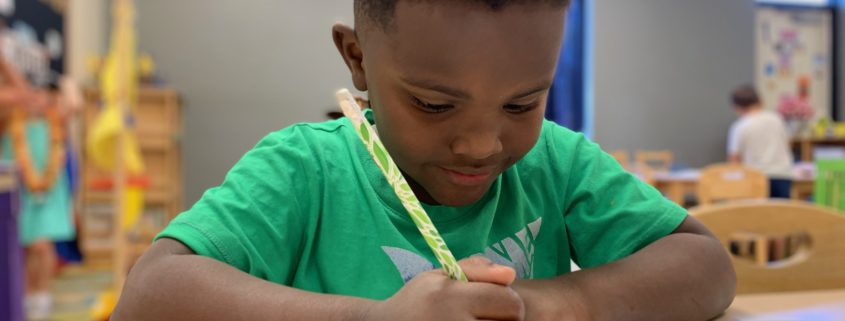Preschoolers are always curious about things. So, whenever they see words on TV or in a book, they might start to wonder what they mean. That’s why there’s no better time to get your preschooler started with comprehending words and letters. While some children are able to adapt to writing right away, others will need more time to learn and adjust to the prospect.
Here are 6 ways that you can help your preschooler grow and incorporate their writing skills in the real world, while having fun doing so.
Name-Writing
“One of the first writing practices that you can have your preschoolers do is practicing writing their names,” says Anthony Wrenfordsley, a journalist at Stateo Of Writing and Essayroo. “You can start by pointing out the letters in their name on anything that you see in the real world. For example, if you see that a toy block has the first letter of your child – say, the letter H – and your child’s name is Humphrey, then you can tell him ‘That block starts with an H, just like your name, Humphrey.’”
Ultimately, you’re showing your child that they can make their mark on projects, artwork, etc.
Using Magnet Letters
If you don’t have toy blocks with letters on them, then fridge magnet letters are a good alternative. Not only will kids enjoy sticking these magnets to the fridge, but they can also learn to spell words, from grocery lists to love letters to parents. You can have them write their name with these magnets on the fridge by showing them how to arrange letters in their name.
Finger Play
Kids like to play with their fingers (especially when it comes to finger paints). With paint, you’re showing your kids that writing doesn’t have to be done with pencils or pens. In fact, writing with your fingers helps you to develop the strength and dexterity needed to eventually learn to grasp and use a pencil, pen, or crayon. Plus, the sensory aspect of using paint is fun to a child.
Play “Flying Messages”
What better way to present words and phrases to your child than to play “Flying Messages?” Here’s what you’ll need:
- A ball or Frisbee
- Beige-colored tape roll
- Some paper
First, cut some paper into six 1-1/2 – 2″- wide strips the long way. Then, you and your child write three commands (one on each strip of paper) that tell the other person to do something like “Quack like a duck” or “Quack!” When writing the commands, don’t let your child see them, until you toss it to them. Then, when receiving the ball or Frisbee, the child reads the message (or you can read it to them), and they do the command. After your child does the command, have them throw the ball or Frisbee back to you; and then, give them another object with another command for them to read and do.
Create an Alphabet Book
“Alphabet books are great for parents who want to show their preschoolers what all the 26 letters of the alphabet are, and how they can draw them,” says Piper Darwin, an educator at LiaHelp and OXEssays. “If you want to familiarize them with the letters in the alphabet, this is a great way to get them started.”
Creating an alphabet book is easy:
- Have 26 pages in your book.
- Each page will have a single letter.
- You can use stickers, colors, paints, etc. that best correspond with the letter on the page. (For example, ladybug stickers can be on the “letter L” page of the book.)
- Have your child add something to a page that corresponds with the letter.
- Have your child draw the letters of the alphabet on a separate piece of paper. Or, if you’ve constructed the book yourself, let them practice writing the letters inside the book.
Journaling
Finally, you can give your child a journal, where they can practice writing letters and words. Journaling is where your child can express themselves creatively. Who knows? They might write or draw about their day or tell a fun story. With journaling, the possibilities are endless.
Conclusion
So, there you have it! 6 ways to get your preschoolers ready to make their writing skills shine! Give one – or all of these – a try and have fun!
Katherine Rundell is an educator and writer at Ukwritings.com and Academized.com. She is also a proofreader at Boomessays.com. As an educator, she teaches and tutors English. And, as a professional writer, she blogs about her experiences in writing and teaching.

